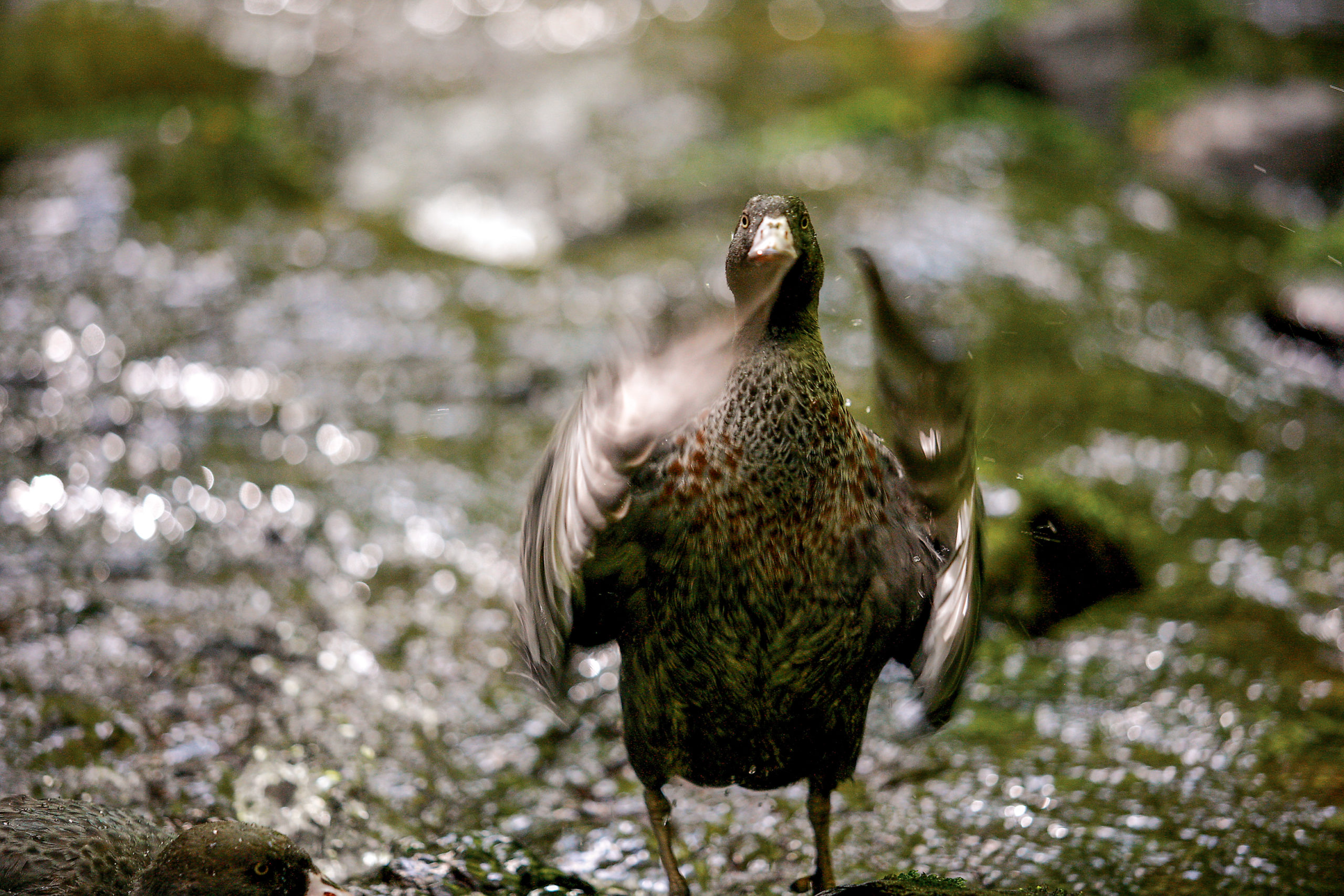Taranaki Mahood-Lowe Reserve

Location
About 8km south of Egmont Village, the reserve is situated adjacent to the northern boundary of Egmont National Park, with the Waiwhakaiho River near the eastern boundary. The Kai Auahi Stream forms the western boundary.
Description
Mahood-Lowe Reserve was purchased in 2018 following a successful fundraising campaign. A further 9ha was added in 2020 taking the total area to 142ha.
The campaign to protect the property began with a very generous donation of $250,000 from Ray and Jan Lowe. Sadly, Jan passed away not long after making their donation. The new reserve is named in Ray and Jan’s honour.
With an altitude range of 380-450 metres above sea level, vegetation comprises lowland and wetland forest types on flood deposits of alluvial gravel and sand (known as the Hangatahua Gravels).
Flora and Fauna
The Reserve is connected with Egmont National Park (approx. 33,000ha), providing easy passage and increased habitat for the Park’s numerous threatened species which include North Island brown kiwi, North Island robin, whitehead, North Island rifleman and bush falcon. Whio (blue duck) is a threatened species that can be seen on both rivers near the Reserve boundaries.
Kai Auahi Stream forming the western boundary has very high water quality and stability, supporting a significant and diverse aquatic invertebrate community and is likely to have notable native freshwater fish such as shortjaw kōkopu (classified as “threatened”), the “at risk” kōaro, longfin eel and redfin bully.
Recent surveys have located long-tailed bats in the National Park and there is good bat habitat at this site.
The Reserve ecosystem type is considered “reduced” from its former extent in Taranaki. Mature podocarp trees were logged long ago. Now dominated by tawa, kahikatea, rimu and kāmahi, there are also “regionally distinctive” maire tawake (swamp maire, Syzygium maire) scattered throughout and “at risk” kohurangi (Kirk’s tree daisy, Brachyglottis kirkii var. kirkii). Other notable species are Kirk’s kōhūhū (Pittosporum kirkii) and Tāwhiri karo (Pittosporum cornifolium).
Walking Tracks
There are a number of maintained walking tracks around the Reserve.
Please note:
- These tracks have rough walking underfoot and weather conditions can change quickly. Sturdy footwear and suitable outdoor clothing is recommended.
- We highly recommend that all users carry a Personal Locator Beacon (PLB) at all times, as mobile phones may not work under the dense tree canopy.
- Entry to this Reserve is at your own risk.
- Please respect neighbouring private property by remaining within the Reserve boundary during your walk.
Walking routes through the Reserve generally follow open areas that were previously used as logging tracks by the previous owners.
From the carpark, visitors can access the following tracks, marked with colour-coded trail markers:
- Pink Easy Track: very short loop track, allowing glimpses of forest edges and natural regeneration (10-minute walk).
- Red Loop Track: Longer loop track through old clearings, with views of emergent trees and glimpses of the mountain’s higher slope on clear days (50-minute walk).
- Orange Bush Track: One-way track through dense swamp forest, with lots of bird sightings and calls. Toutouwai (North Island robin) are commonly spotted through here, and these friendly, curious birds may follow you as you stir up bugs for them to eat. This track can be very wet and rough underfoot, so waterproof, sturdy footwear is recommended (2.5 hours return to carpark).
- Yellow DOC Boundary Track: This one-way track follows the boundary fence between the Reserve and Te Papakura o Taranaki National Park (DOC land). At the northern end, there is a rough track, crossing a stile, through DOC land down to the Kai Auahi Stream. Whio (blue duck) are commonly spotted on this stream, and a pair of Kārearea (NZ falcon) often soar overhead (4 hours return to carpark).

NOTE: Tracks not marked on this map are used for trapping only – we don’t recommend these for recreational use. Our trap network is very important – we are protecting numerous rare and threatened species by removing introduced predators like rats, weasels and stoats. Please do not interfere with our traps.
No dogs are allowed in this wildlife reserve.
No hunting without the express permission of the Native Forest Restoration Trust
Getting There
Get directions: Find out here

